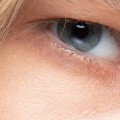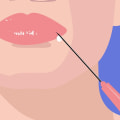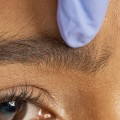Dermal filler is a popular choice for those looking to reduce wrinkles and add volume to their face. It is a minimally invasive procedure that can be done in a single hour, and the results can last for up to 18 months. However, there are some cases where the facial fillers may migrate to another site on the face a few days after the injection. This is known as Juvederm migration.
Dr. Gavin Chan, an expert in intensive care, anesthesia, and emergency medicine, has been providing cosmetic procedures such as anti-wrinkle injections, dermal fillers, liposuction, fat transfer, skin puncture, and laser treatments for many years. He has recently made an innovative discovery about dermal fillers that has “surprised” him with regard to their longevity. Traditionally, it was believed that fillers would last between 6 and 12 months, or even 18 months.
However, Dr. Chan has found that dermal fillers can remain in place for up to 8 years. To confirm this finding, he referred his patients for magnetic resonance imaging (MRI) to his colleague Dr. Mobin Master (MBBS FRANZCR).
Master is qualified in both radiology and cosmetic medicine and was the perfect doctor to investigate these types of dermal filling problems. Master believes that MRI is an underused tool in cosmetic medicine as it allows us to see exactly where the dermal filler is present on the lips, cheeks and eye areas. This has led Dr. Chan to recommend a minimalist approach to injecting dermal fillers as it creates the best results.
He also recommends checking dermal fillers every 12 months to confirm that patients are still happy with their appearance. When it comes to Juvederm migration, the best way to avoid it is to choose a professional, highly qualified esthetician who has years of experience applying facial fillers such as Juvederm. Different facial dermal fillers are more suitable for particular areas of the face due to differences in their composition and must be injected at different depths into the skin. Over time, as facial movement increases in areas such as the lips or cheeks, it causes the filler to break down and dissolve at a faster rate.
It is important to note that although fillers have gained a lot of popularity in recent years due to their ability to create significant facial rejuvenation, they have some limitations and there are certain instances where a patient may be better off opting for something more meaningful such as plastic surgery. In conclusion, dermal filler can be an effective way of reducing wrinkles and adding volume to your face but it is important to choose an experienced professional who understands how different fillers should be injected into different areas of the face. It is also important to remember that although fillers can last up to 8 years in some cases, they should be checked every 12 months.







